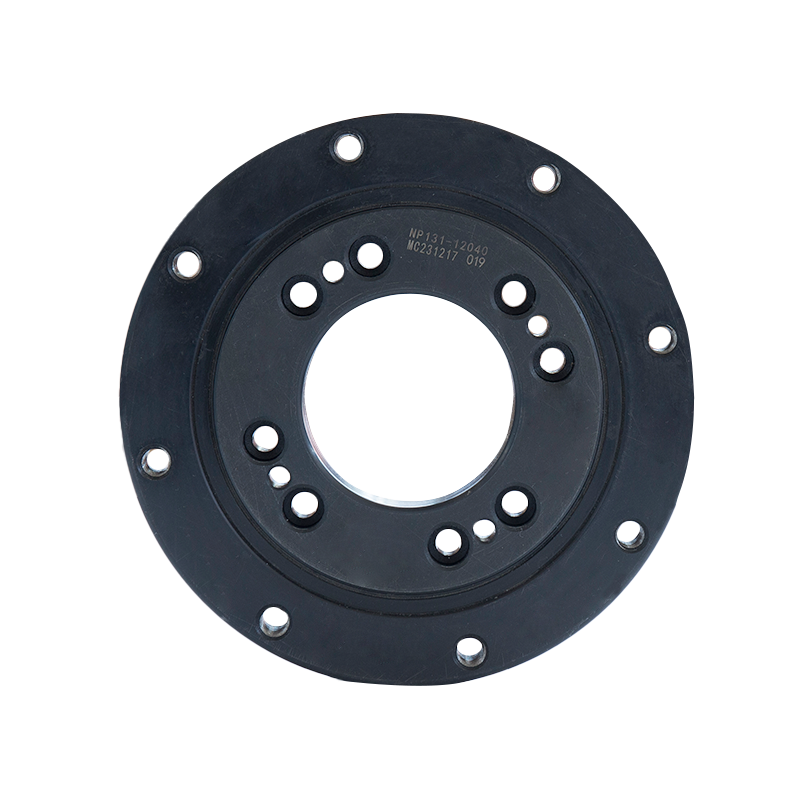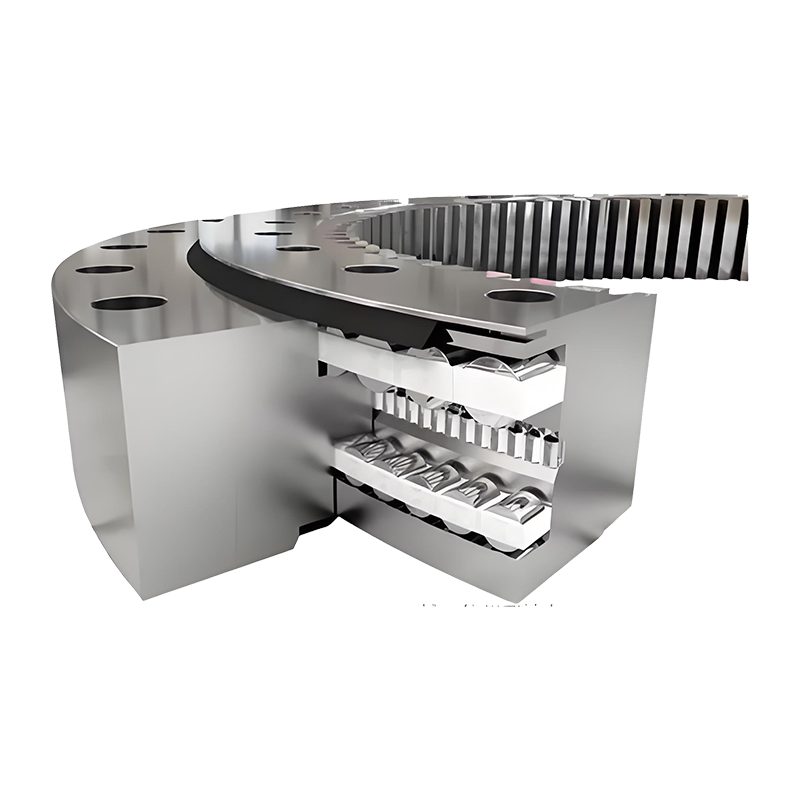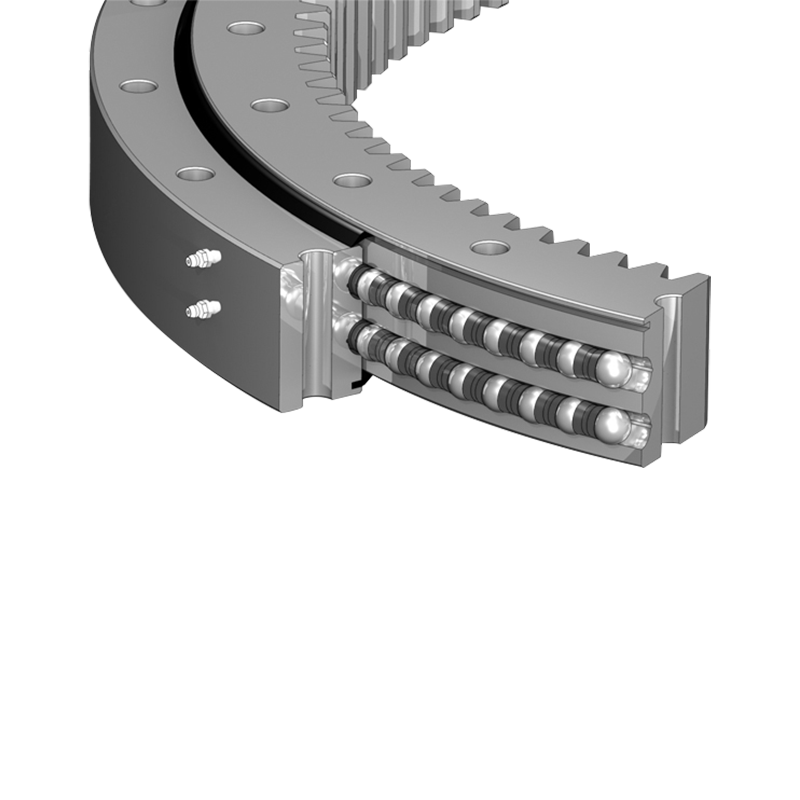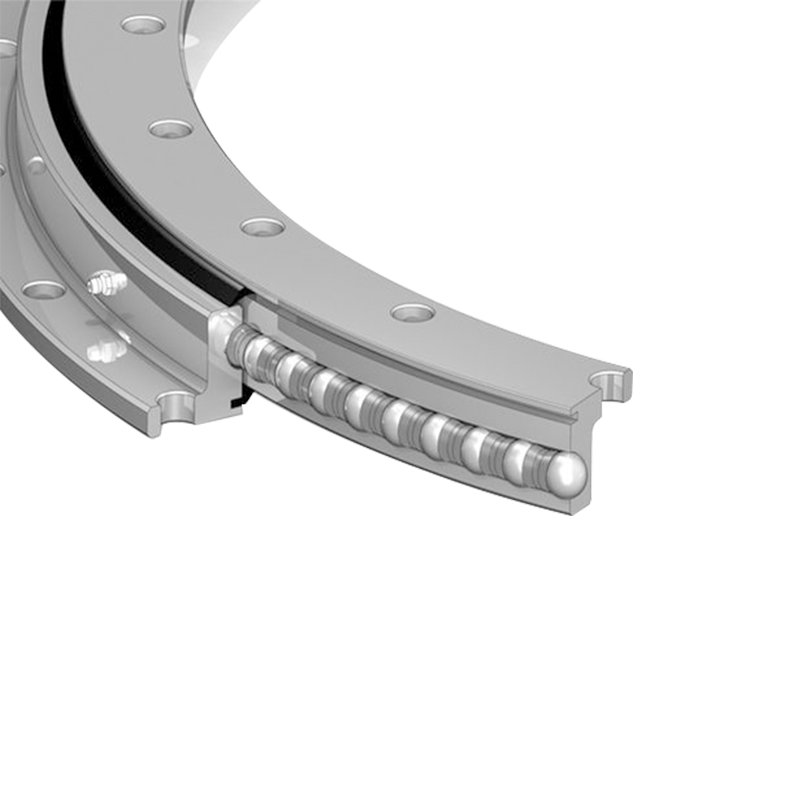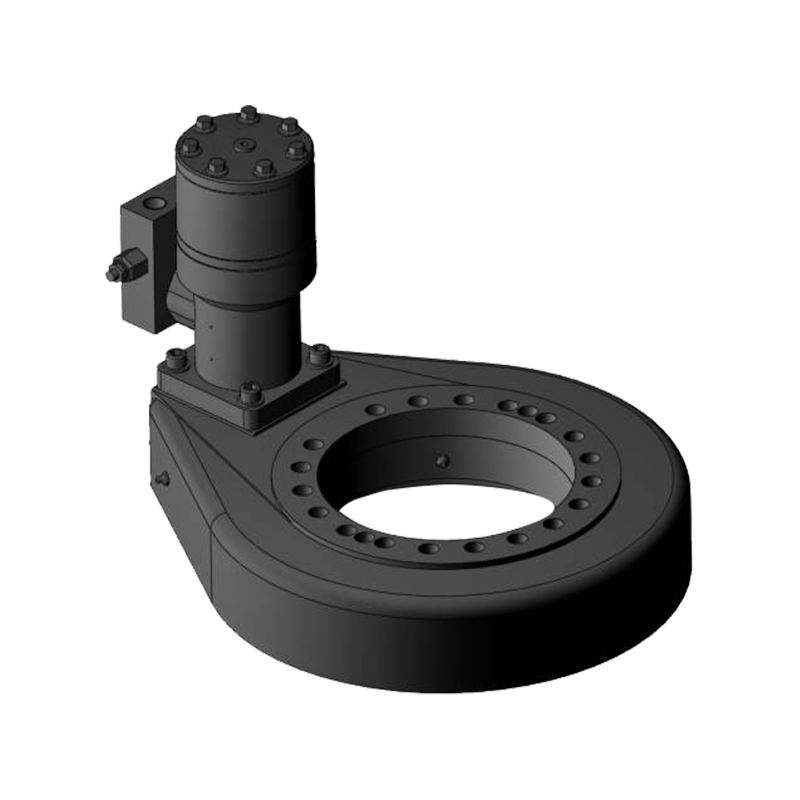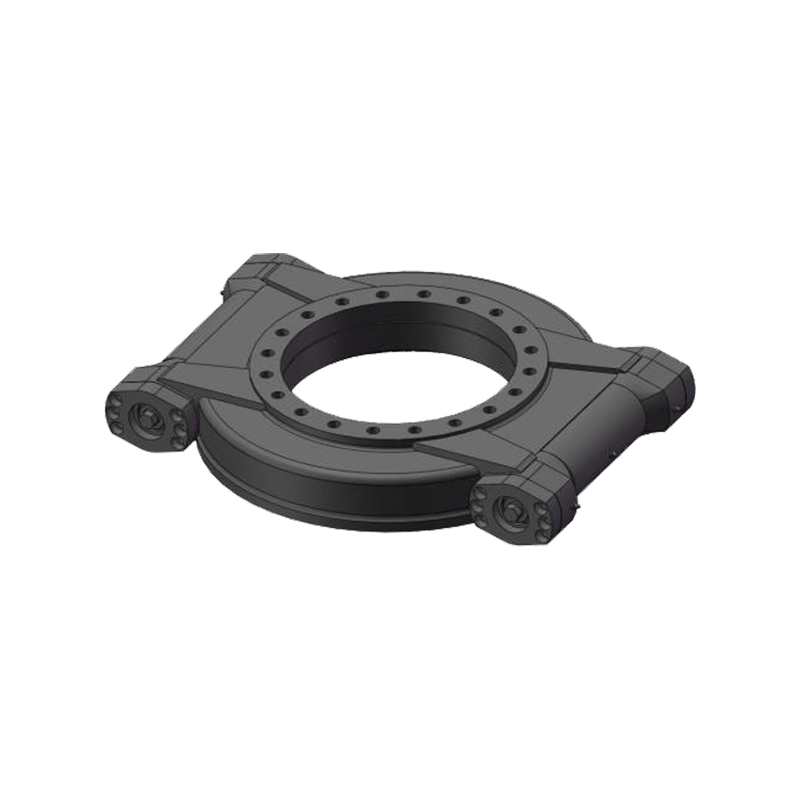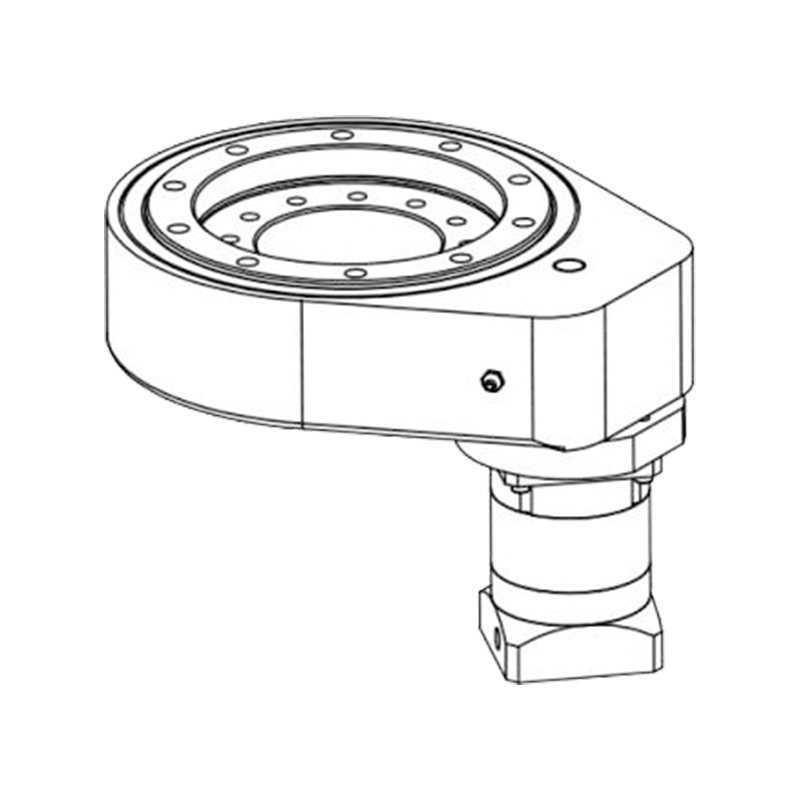Features and Types of Single-Row Ball Slewing Bearing
 2025.09.05
2025.09.05
 Industry news
Industry news
A single-row ball slewing bearing is a specialized type of rolling bearing designed to handle combined axial, radial, and moment loads simultaneously. It is widely used in machinery that requires rotational movement with heavy loads, such as cranes, excavators, wind turbines, and industrial equipment. Known for its compact design and efficient load distribution, this bearing is one of the most common slewing ring configurations.
Key Features of Single-Row Ball Slewing Bearing
-
Compact Structure
- Compared to other slewing bearings, the single-row ball design offers a compact profile, making it suitable for applications where installation space is limited.
-
High Load-Carrying Capacity
- The bearing is designed to support axial loads, radial loads, and tilting moment loads at the same time, ensuring stability under complex working conditions.
-
Low Friction and Smooth Rotation
- The rolling contact between balls and raceways provides smooth rotational movement with relatively low friction, improving the efficiency of machinery.
-
Easy Installation and Maintenance
- Most single-row ball slewing bearings come with mounting holes, simplifying installation on machinery. They also require less maintenance compared to more complex designs.
-
Cost-Effectiveness
- Due to its relatively simple structure, the single-row ball slewing bearing is often more economical than multi-row types, making it suitable for a wide range of general applications.
-
Customizable Options
- Manufacturers often provide variations with internal gears, external gears, or without gears, allowing integration with different drive systems.
Types of Single-Row Ball Slewing Bearing
Single-row ball slewing bearings are generally classified based on gear configuration:
1. Without Gear
- A plain bearing ring without gear teeth.
- Requires an external drive mechanism such as a pinion or motor to achieve rotation.
- Commonly used in applications where external drive systems are preferred for design flexibility.
2. External Gear Type
- Equipped with teeth on the outer ring.
- Allows direct engagement with a pinion, simplifying the drive system design.
- Suitable for cranes, excavators, and other construction machinery where external gearing is more convenient.
3. Internal Gear Type
- Features gear teeth on the inner ring.
- Offers a compact drive arrangement, protecting gears from exposure to dust and contaminants.
- Widely used in enclosed systems or applications where space efficiency and gear protection are priorities.
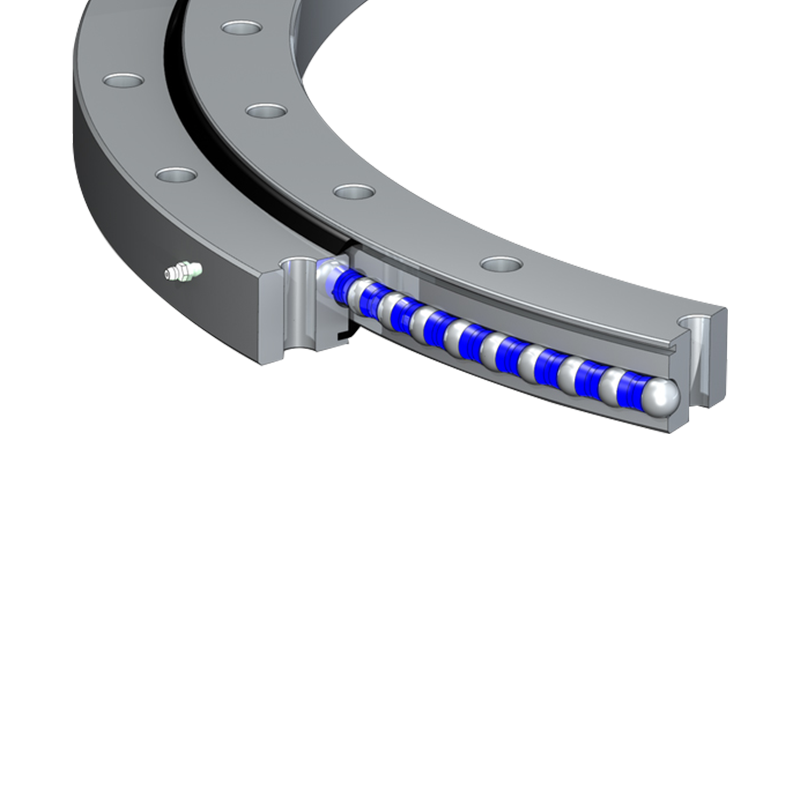
Single-row ball slewing bearings are commonly categorized by gear configuration.
| Type | Features | Typical Applications |
|---|---|---|
| Without Gear | Plain raceway ring without integrated teeth; requires an external drive system. | Robotic arms, turntables, packaging machines, equipment with external drive motors. |
| External Gear | Gear teeth on the outer ring; directly engages with a pinion for rotation. | Cranes, excavators, lifting machinery, construction equipment. |
| Internal Gear | Gear teeth on the inner ring; compact design, protected from dust/contaminants. | Enclosed systems, wind turbines, port machinery, heavy-duty industrial machines. |
Applications of Single-Row Ball Slewing Bearing
- Construction Machinery: Cranes, excavators, concrete pumps.
- Renewable Energy: Wind turbines and solar tracking systems.
- Industrial Equipment: Robotic arms, packaging machinery, turntables.
- Transportation: Port machinery, ship deck cranes, and heavy-duty vehicles.
Conclusion
The single-row ball slewing bearing combines a compact design with strong load-handling capacity, making it an essential component in modern engineering and industrial systems. Available in gearless, external gear, and internal gear types, it provides versatility to suit different drive arrangements and application environments. Its balance of performance, cost-effectiveness, and adaptability explains why it is one of the most widely used slewing bearing configurations today.



